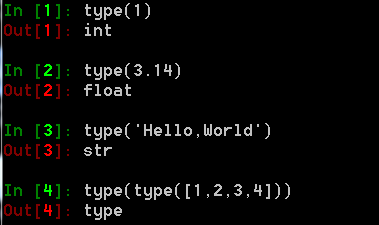Python用list或dict字段模式读取文件的方法
前言
Python用于处理文本数据绝对是个利器,极为简单的读取、分割、过滤、转换支持,使得开发者不需要考虑繁杂的流文件处理过程(相对于JAVA来说的,嘻嘻)。博主自己工作中,一些复杂的文本数据处理计算,包括在HADOOP上编写Streaming程序,均是用Python完成。
而在文本处理的过程中,将文件加载内存中是第一步,这就涉及到怎样将文件中的某一列映射到具体的变量的过程,最最愚笨的方法,就是按照字段的下标进行引用,比如这样子:
# fields是读取了一行,并且按照分隔符分割之后的列表 user_id = fields[0] user_name = fields[1] user_type = fields[2]
如果按照这种方式读取,一旦文件有顺序、增减列的变动,代码的维护是个噩梦,这种代码一定要杜绝。
本文推荐两种优雅的方式来读取数据,都是先配置字段模式,然后按照模式读取,而模式则有字典模式和列表模式两种形式;
读取文件,按照分隔符分割成字段数据列表
首先读取文件,按照分隔符分割每一行的数据,返回字段列表,以便后续处理。
代码如下:
def read_file_data(filepath):
'''根据路径按行读取文件, 参数filepath:文件的绝对路径
@param filepath: 读取文件的路径
@return: 按\t分割后的每行的数据列表
'''
fin = open(filepath, 'r')
for line in fin:
try:
line = line[:-1]
if not line: continue
except:
continue
try:
fields = line.split("\t")
except:
continue
# 抛出当前行的分割列表
yield fields
fin.close()
使用yield关键字,每次抛出单个行的分割数据,这样在调度程序中可以用for fields in read_file_data(fpath)的方式读取每一行。
映射到模型之方法1:使用配置好的字典模式,装配读取的数据列表
这种方法配置一个{“字段名”: 字段位置}的字典作为数据模式,然后按照该模式装配读取的列表数据,最后实现用字典的方式访问数据。
所使用的函数:
@staticmethod
def map_fields_dict_schema(fields, dict_schema):
"""根据字段的模式,返回模式和数据值的对应值;例如 fields为['a','b','c'],schema为{'name':0, 'age':1},那么就返回{'name':'a','age':'b'}
@param fields: 包含有数据的数组,一般是通过对一个Line String通过按照\t分割得到
@param dict_schema: 一个词典,key是字段名称,value是字段的位置;
@return: 词典,key是字段名称,value是字段值
"""
pdict = {}
for fstr, findex in dict_schema.iteritems():
pdict[fstr] = str(fields[int(findex)])
return pdict
有了该方法和之前的方法,可以用以下的方式读取数据:
# coding:utf8
"""
@author: www.crazyant.net
测试使用字典模式加载数据列表
优点:对于多列文件,只通过配置需要读取的字段,就能读取对应列的数据
缺点:如果字段较多,每个字段的位置配置,较为麻烦
"""
import file_util
import pprint
# 配置好的要读取的字典模式,可以只配置自己关心的列的位置
dict_schema = {"userid":0, "username":1, "usertype":2}
for fields in file_util.FileUtil.read_file_data("userfile.txt"):
# 将字段列表,按照字典模式进行映射
dict_fields = file_util.FileUtil.map_fields_dict_schema(fields, dict_schema)
pprint.pprint(dict_fields)
输出结果:
{'userid': '1', 'username': 'name1', 'usertype': '0'}
{'userid': '2', 'username': 'name2', 'usertype': '1'}
{'userid': '3', 'username': 'name3', 'usertype': '2'}
{'userid': '4', 'username': 'name4', 'usertype': '3'}
{'userid': '5', 'username': 'name5', 'usertype': '4'}
{'userid': '6', 'username': 'name6', 'usertype': '5'}
{'userid': '7', 'username': 'name7', 'usertype': '6'}
{'userid': '8', 'username': 'name8', 'usertype': '7'}
{'userid': '9', 'username': 'name9', 'usertype': '8'}
{'userid': '10', 'username': 'name10', 'usertype': '9'}
{'userid': '11', 'username': 'name11', 'usertype': '10'}
{'userid': '12', 'username': 'name12', 'usertype': '11'}
映射到模型之方法2:使用配置好的列表模式,装配读取的数据列表
如果需要读取文件所有列,或者前面的一些列,那么配置字典模式优点复杂,因为需要给每个字段配置索引位置,并且这些位置是从0开始完后数的,属于低级劳动,需要消灭。
列表模式应命运而生,先将配置好的列表模式转换成字典模式,然后按字典加载就可以实现。
转换模式,以及用按列表模式读取的代码:
@staticmethod
def transform_list_to_dict(para_list):
"""把['a', 'b']转换成{'a':0, 'b':1}的形式
@param para_list: 列表,里面是每个列对应的字段名
@return: 字典,里面是字段名和位置的映射
"""
res_dict = {}
idx = 0
while idx < len(para_list):
res_dict[str(para_list[idx]).strip()] = idx
idx += 1
return res_dict
@staticmethod
def map_fields_list_schema(fields, list_schema):
"""根据字段的模式,返回模式和数据值的对应值;例如 fields为['a','b','c'],schema为{'name', 'age'},那么就返回{'name':'a','age':'b'}
@param fields: 包含有数据的数组,一般是通过对一个Line String通过按照\t分割得到
@param list_schema: 列名称的列表list
@return: 词典,key是字段名称,value是字段值
"""
dict_schema = FileUtil.transform_list_to_dict(list_schema)
return FileUtil.map_fields_dict_schema(fields, dict_schema)
使用的时候,可以用列表的形式配置模式,不需要配置索引更加简洁:
# coding:utf8
"""
@author: www.crazyant.net
测试使用列表模式加载数据列表
优点:如果读取所有列,用列表模式只需要按顺序写出各个列的字段名就可以
缺点:不能够只读取关心的字段,需要全部读取
"""
import file_util
import pprint
# 配置好的要读取的列表模式,只能配置前面的列,或者所有咧
list_schema = ["userid", "username", "usertype"]
for fields in file_util.FileUtil.read_file_data("userfile.txt"):
# 将字段列表,按照字典模式进行映射
dict_fields = file_util.FileUtil.map_fields_list_schema(fields, list_schema)
pprint.pprint(dict_fields)
运行结果和字典模式的完全一样。
file_util.py全部代码
以下是file_util.py中的全部代码,可以放在自己的公用类库中使用
# -*- encoding:utf8 -*-
'''
@author: www.crazyant.net
@version: 2014-12-5
'''
class FileUtil(object):
'''文件、路径常用操作方法
'''
@staticmethod
def read_file_data(filepath):
'''根据路径按行读取文件, 参数filepath:文件的绝对路径
@param filepath: 读取文件的路径
@return: 按\t分割后的每行的数据列表
'''
fin = open(filepath, 'r')
for line in fin:
try:
line = line[:-1]
if not line: continue
except:
continue
try:
fields = line.split("\t")
except:
continue
# 抛出当前行的分割列表
yield fields
fin.close()
@staticmethod
def transform_list_to_dict(para_list):
"""把['a', 'b']转换成{'a':0, 'b':1}的形式
@param para_list: 列表,里面是每个列对应的字段名
@return: 字典,里面是字段名和位置的映射
"""
res_dict = {}
idx = 0
while idx < len(para_list):
res_dict[str(para_list[idx]).strip()] = idx
idx += 1
return res_dict
@staticmethod
def map_fields_list_schema(fields, list_schema):
"""根据字段的模式,返回模式和数据值的对应值;例如 fields为['a','b','c'],schema为{'name', 'age'},那么就返回{'name':'a','age':'b'}
@param fields: 包含有数据的数组,一般是通过对一个Line String通过按照\t分割得到
@param list_schema: 列名称的列表list
@return: 词典,key是字段名称,value是字段值
"""
dict_schema = FileUtil.transform_list_to_dict(list_schema)
return FileUtil.map_fields_dict_schema(fields, dict_schema)
@staticmethod
def map_fields_dict_schema(fields, dict_schema):
"""根据字段的模式,返回模式和数据值的对应值;例如 fields为['a','b','c'],schema为{'name':0, 'age':1},那么就返回{'name':'a','age':'b'}
@param fields: 包含有数据的数组,一般是通过对一个Line String通过按照\t分割得到
@param dict_schema: 一个词典,key是字段名称,value是字段的位置;
@return: 词典,key是字段名称,value是字段值
"""
pdict = {}
for fstr, findex in dict_schema.iteritems():
pdict[fstr] = str(fields[int(findex)])
return pdict
总结
以上就是这篇文章的全部内容了,希望本文的内容对大家学习或者使用python能有一定的帮助,如果有疑问大家可以留言交流。
